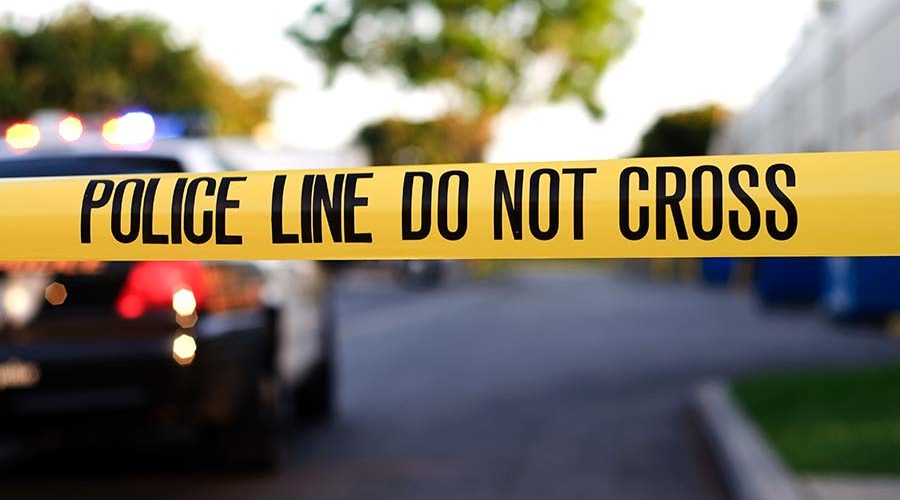By Rick Lawrence
I was driving home from a writing retreat, where I’d been off the grid for four days—no Wi-Fi, no cell service. I called my wife to let her know I was on the road, and I heard that edge in her voice that I know all too well… “Rick, there’s an active shooter situation happening right now, at the STEM school that’s 10 minutes from us. Emma’s in lockdown at her school right now, and I don’t know when she’ll be released. They’re already saying there are students down…”
Today, two days later, I’m immersed in the background noise of local news reporters talking about victims and perpetrators and student heroes and “Run, Hide, Fight.” In the Denver community, where I live, we’ve been through this before, of course—Columbine set the horrific template for school shootings. Then, as now, I knew I’d be with parents and teenagers traumatized by this tragedy. And I knew the open wound from this gash would never close…
In the middle of crisis and tragedy, youth workers (including me) must deal with our own emotional response while simultaneously offering what author Edwin Friedman calls our “non-anxious presence” into an atmosphere of fear and confusion and grief.
When I arrived home, my wife and I retreated into my office and wrestled with what to do about our “home church” of teenagers, meeting that night. Would we ditch what I’d planned and focus the whole night on the shooting and its aftermath? Ditch the plan and switch to something that addresses fear in general? Cancel the group altogether so kids could feel free to be with their families?
[tweet_box design=”default” float=”none”]In the middle of crisis and tragedy, youth workers (including me) must deal with our own emotional response while simultaneously offering what author Edwin Friedman calls our “non-anxious presence” into an atmosphere of fear and confusion and grief.[/tweet_box]
So, we reached out via text to see how many were still planning to come, and decided not to cancel. And I told my wife that my experience with people in the midst of a trauma is that they need to look at it, then look away, then look at it again. We can’t handle staring at it for too long, because it’s too much for our soul. So I decided not to lead what I’d planned and, instead, grabbed an experience I led a few years ago on how Jesus helped His disciples face their fears. Then we welcomed our group—most showed up—and opened by acknowledging the fear, and grief, and anger we’d been swept into… And then we launched into our conversation… It was beautiful and amazing and sad and invigorating… And filled with the “into the dark” presence of Jesus…
Years ago, after a school shooting in Pennsylvania, youth worker Rob Tucker sent me his strategic “response priorities”—learned from his direct experience. Here is what Rob had learned about responding to kids in crisis and tragedy:
1. Respond quickly and proactively. Don’t allow the crisis to control your ministry’s direction. Rather, ask yourself how your ministry can help direct the response to the crisis. Jesus’ redemptive plan for any tragedy is carried out through his people. Ask Him to move through your ministry and church for healing, reconciliation, or whatever is needed.
2. Encourage your teenagers to tell, retell, and tell again their story. The relief that comes from being heard is hard to measure. Many kids just want you to hear what they’ve been through. They’re not looking for knee-jerk reactions to complicated situations or quick fixes for their problems. They want you to really hear them. Remedies can come later with Jesus’ help.
[tweet_box design=”default” float=”none”]Don’t allow the crisis to control your ministry’s direction. Rather, ask yourself how your ministry can help direct the response to the crisis.[/tweet_box]
3. Don’t forget to reach out to parents. Many parents were just as shaken up as their kids. Put yourself in their shoes. Empathize with their fears. Help them with their pain. If they’re not well, it will take much longer for their children to find help.
4. Offer whatever you have to the community. Give your time, your building, your expertise, and any other valuable resource that can help in the situation. Keep offering, even when your help is declined. It’s crucial your community understands your true intentions—your church exists to meet the real needs of real people. Open a door between your community and your ministry.
5. Change your program to meet your kids’ needs. If you truly have a “relational ministry,” you’ll dump what you’ve planned to respond to what kids really need. It might mean re-planning your regular gathering or even a retreat weekend. This isn’t about your agenda—it’s about meeting kids where they’re at, inviting Jesus to give you insight and wisdom as you do.
6. Ask your youth staffers, parents, and other youth leaders about ways you can improve your response. Refuse to assume your actions have hit the mark—find out by asking.
7. Invite Jesus to deepen your dependence on him. A tragedy clarifies your vision—we’re viscerally more desperate for Jesus’ help. He will help clarify our perspective on what’s really important in youth ministry. A crisis puts Him squarely at the center of everything… just where He belongs.
Rick Lawrence is executive editor of Group’s youth ministry resources.

